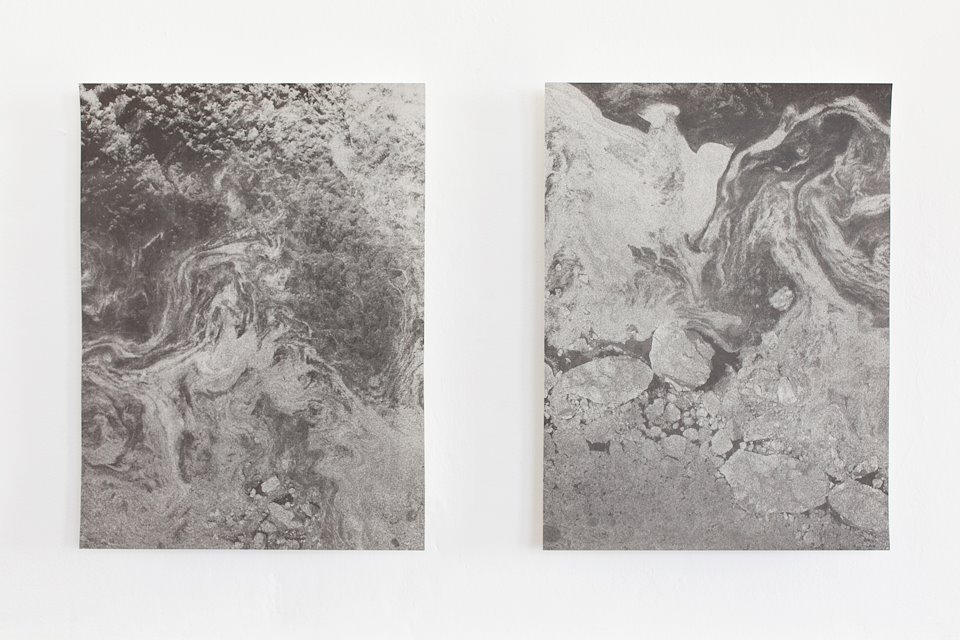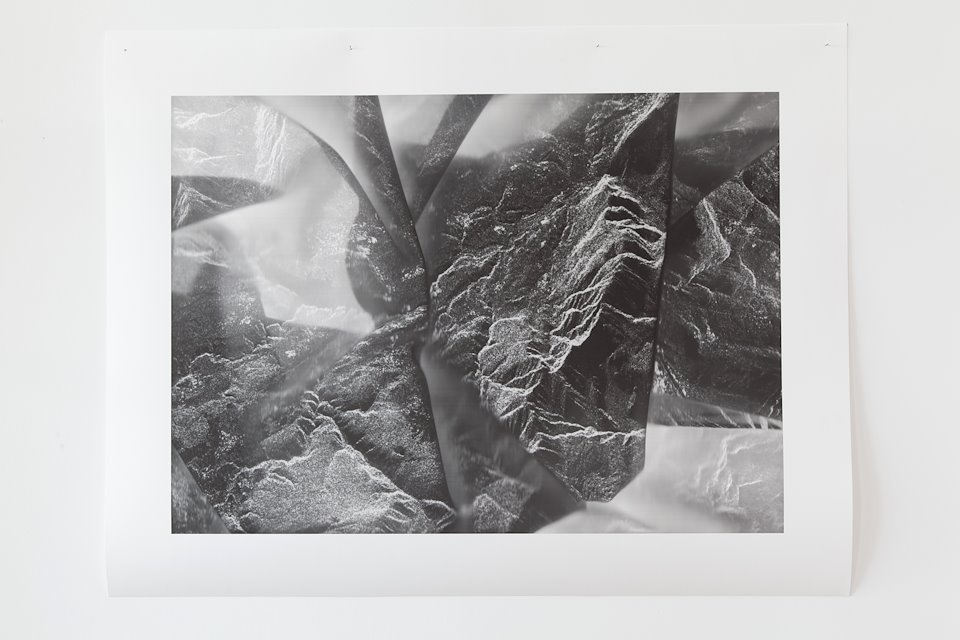


Split 1 & 2, Photo-lithographs, 28x40cm, 2019

Fold, Giclée print, 60x100cm, 2019


Surfacing 1-4, Giclée prints mounted on perspex, 10x10cm, 2017
Scatter, Moving Image, Size Variable, 2019
How the Land Lies
-
Catriona Leahy | Luci Eldridge | Andrew Youngson | Wieteke Heldens | Rachel Bacon
25 January - 2 May 2020
Sirius Arts Centre, Cobh, Cork, Ireland
-
The word landscape has deep-rooted traditions and associations to formal composition, aesthetics and “the pictorial” within the context of art history. Referring to the visible world, its generic meaning suggests a unified perspective where the role of the spectator is central. The body and its orientation in space serves as a medium for the reception and interpretation of landscape and provides the comforting limits to an otherwise daunting, limitless vista – both spatial and temporal. This anthropocentric viewpoint reinforces the origins of the word; derived from the Dutch word landschap, landscape literally means the shaping of the land by people. It is this problematic meaning that underpins much of the work and research of the five participating artists in this exhibition.
Catriona Leahy’s (IE) deliberately fragmented images, created through the manipulation and collaging of photographic negatives, explores landscapes that are deemed redundant and subsequently repurposed for economic and ideological purposes. Guided by the question of how to re-imagine landscape in a time of ecological crisis, Rachel Bacon’s (USA/NL) abstract sculptural drawings emerge in response to the exploitation of open pit mines in both Germany and Russia. Andrew Youngson’s (UK) series of dense black photographs The wood yields 10 swine, focuses on the depths of the Northern European Forest as a landscape that still harbours the traumas of war. Influenced by a period spent in intensive care, Wieteke Heldens (NL) recalls an experience of seeing her environment only through a separation of colours and thereby forced to form a new reality and understanding. This is reflected in her paintings that resemble a legend, used as a key for reading maps, and her drawings that resemble chaotic flight paths . Finally, Luci Eldridge (UK) draws our attention to the scientific visioning of landscape as seen from satellites that use radar to map the Earth. Employing filming and scanning techniques that reinvent the surface of the image she questions how technology can alter our perception of landscape.
Together, their work suggests that what we see is not what is there – the land lies and therefore merits a closer reading, interpretation and metaphorical excavation. Each artist uses a variety of approaches that problematise established notions of landscape - be it natural, built or imagined - revealing hidden or latent features inscribed within. Through their work they offer a range of perspectives on how we experience, perceive and interpret our landscapes of the future as well as its cumulative and contested past.